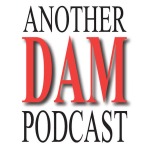Here are the questions asked:
How are you involved with Digital Asset Management?
How does a leading health solutions company use Digital Asset Management?
What are the biggest challenges and successes you’ve seen with Digital Asset Management?
What advice would you like to share with DAM professionals and people aspiring to become DAM professionals?
Transcript
Henrik de Gyor 0:00
This is Another DAM Podcast about Digital Asset Management. I’m Henrik de Gyor. Today I’m speaking with Laura Patterson.
Laura, how are you?
Laura Patterson 0:08
I’m doing great. Thanks. How are you?
Henrik de Gyor 0:10
Great. Laura, how are you involved with Digital Asset Management?
Laura Patterson 0:14
I have a lot of different roles in asset management for my organization. I am part strategist, part project manager, developer, coder, I do a whole gamut of different things within the DAM world. And it’s been about 10 years of me being in this field. And within the organization I’m in now, I have actually built three different DAMs, and each one has been progressively more complex than the next. And we’ve done so because of obviously, the technology changing in the world and the changing business needs of our organization. So we’re just finishing up building our third DAM for the company.
Henrik de Gyor 0:59
Laura, how does a leading health solutions company use Digital Asset Management?
Laura Patterson 1:05
We use it in a very wide variety of ways. We are all encompassing our entire enterprise is utilizing this DAM to search and download assets. And this is across many different business areas. We have our retail marketing and creative teams, obviously, they’re one of our primary users. But we also have folks in corporate communications and HR, learning and development, our prescription benefits management groups. So we have a very broad audience. But we also service a number of external partners, including design agencies, photographers, and illustrators, some of whom might be coming to the DAM to consume our assets, utilize them in partnership work that we’re doing with them, or they might be contributing assets to us, such as photo shoots or video shoots, etc. And our other primary external users are our product vendors, they are actually our heaviest uploaders of the system. We have a partnership with these product vendors, where we advertise their products, and they help us with our marketing campaigns. So they will provide us with their imagery that then gets stored in the DAM, access by marketing and creative and subsequently used in our marketing materials. We are expanding very quickly, we are getting more and more people that are involved in participating in the DAM. And I think with the technology and digital transformation, we’re really bringing a lot of consistency to our technology stack across the organization.
Henrik de Gyor 2:47
Laura, what are the biggest challenges and successes you’ve seen with Digital Asset Management?
Laura Patterson 2:52
I’ll start with one of my biggest challenges that I’ve experienced, and then how it became successful. So one of the biggest challenges that we have had is user adoption and change management. That can be a really big deal for folks that have never used an asset management platform before and trying to understand why we need it, why we have to participate in it, what benefits does it bring. So, you know, definitely with different types of business areas that can be far more challenging to convince than others. And I would say that the success of dealing with that challenge is as you’re building out your DAM, whether it’s from the very getgo, starting your strategy, metadata development, the actual platform development, any business areas that are going to be touching this platform at any level, you should engage with them right at the start of the project and get their input and their feedback, understand their problems and their needs, and work with them to come up with solutions. I found that it’s more successful when you involve all of these different groups that you want to adopt the DAM, and how let them have their say, and how it gets applied to their world and give them those sorts of real life experiences and how it will directly relate to them. And you will find that the adoption and the change management becomes much smoother when you have that communication and that open door for them to give them what they need.
Henrik de Gyor 4:27
Laura, what advice would you like to share with DAM professionals and people aspiring to become DAM professionals?
Laura Patterson 4:34
I would say my advice is and this would go for both new and existing again, really thinking through your strategy really working with the different business areas. Not thinking about DAM in a vacuum of how you as the asset manager is going to work with the assets, work with the application, but to think broader in terms of how it’s going to to impact your direct users, both incoming and outgoing, and if you really put your focus on the users, you’re going to have a much better DAM solution, a better experience for your users. And you’re really going to get people engaged and wanting to participate. I found that has been probably the biggest success for me in my career in really getting the asset management out into the organization and really making it successful and worthwhile for all of our users.
Henrik de Gyor 5:35
Well, thanks, Laura.
Laura Patterson 5:36
Thank you very much.
Henrik de Gyor 5:37
For more on this, visit anotherdampodcast.com. If you have any comments or questions, please feel free to email me at anotherdamblog@gmail.com. Thanks again.
Listen to Another DAM Podcast on Apple Podcasts, AudioBoom, CastBox, Google Podcasts, RadioPublic, RSS, Spotify, TuneIn, and more
Need Digital Asset Management advice and assistance?
Another DAM Consultancy can help. Schedule a call today

